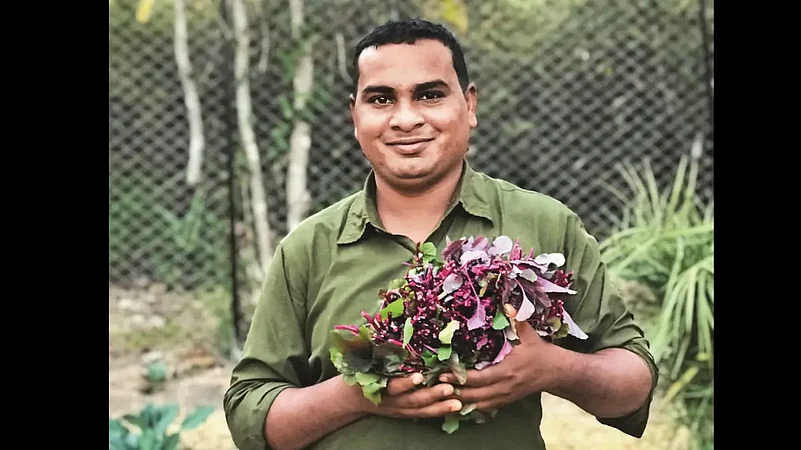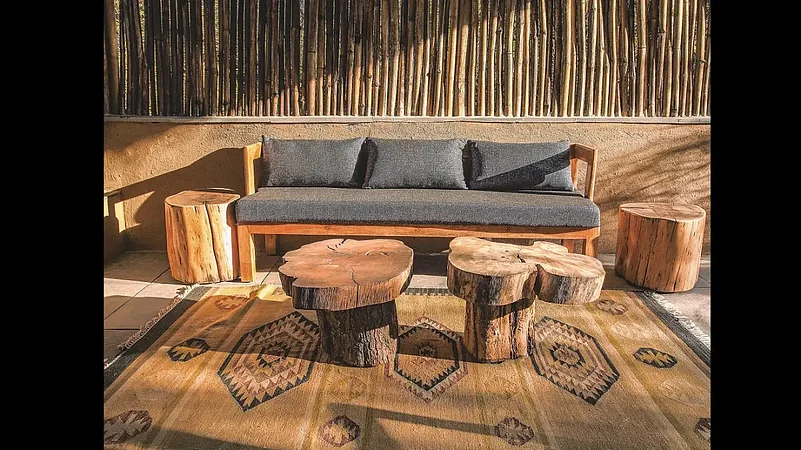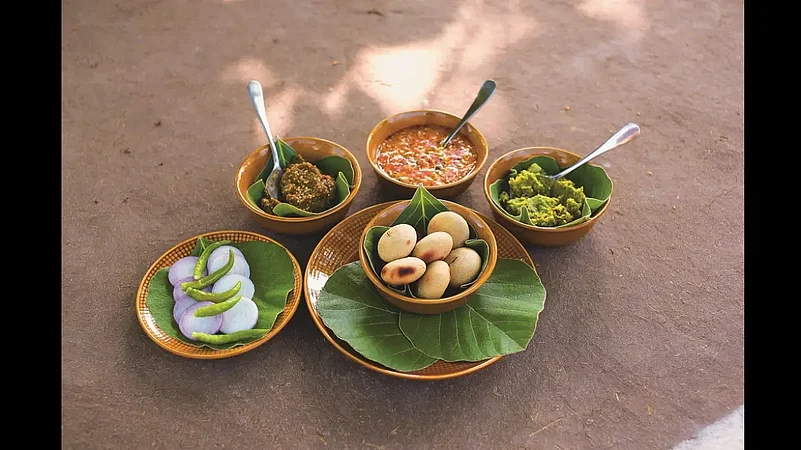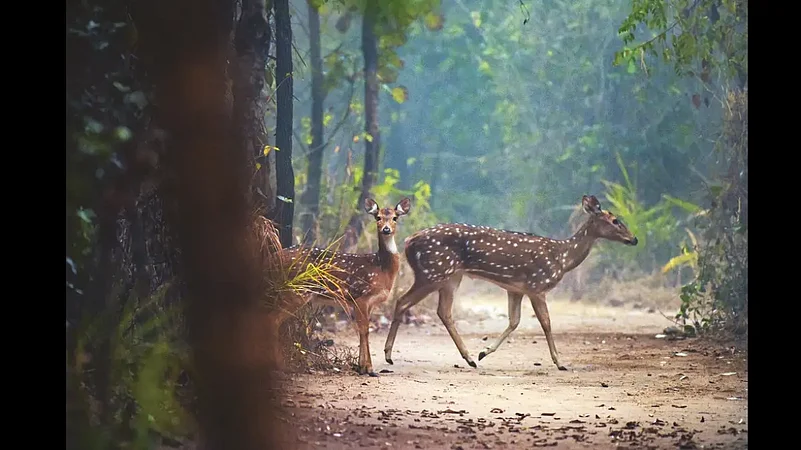At 6 am, it is still quite dark when I reach river Denwa. Dawn is breaking somewhat reluctantly, and the only sound is a familiar honkcaw call above me. I can just about make out two bar-headed geese flying across the pre-dawn sky, noisily announcing the arrival of a new day, or perhaps, their arrival in Satpura. The incredible winter migratory birds fly over 20,000ft across the Himalayas, taking a high, long and windy route just to come say hello. George Lowe, the Kiwi climber who supported Hillary and Norgay’s ascent in 1953, even claimed to have seen them fly over Mt Everest! Though that claim remains unverified, there’s no doubt that the bird takes an astonishingly high path during their migration from Central Asia to India and its (remaining) wetlands.
The silence is broken, again, by the swishing sounds of the river Denwa as boatmen move towards the motorboats that will take us across the river to the Madhai gate of Satpura Tiger Reserve (STR). I climb into a boat and, with a quiet thrill, make my way to the morning safari. At 6:15am sharp, the Madhai gate will open and I will be ready in my jeep, eager to accept the gifts of the forest.

***
Among wildlife enthusiasts Satpura is a hallowed name. Unfrequented by tourists even today, the changing topography and rich biodiversity of the jungle here holds a special status among conservationists and naturalists across the world. Spread over 1,427 sq km of core forest area, and an additional 794 sq km buffer zone, this is one of the largest national parks in the country. As we drive into the park, the topography quickly changes – from wetlands and open meadows to dense foliage with mixed local species such as saj, mahua, tendu, lendia, sagwan and kulu, the ghost tree, so called because of the white bark that shines in the dark and appears rather like a large spooky creature with spindly crooked fingers.

You drive on for a while and the landscape changes again to hilly tracts, and again to rocky patches that offer exciting leopard sightings. Today, it feels like we are alone in the park. For such a large park, only 15 jeeps are allowed in at a time – and on a usual weekday like today, there are only five or six jeeps inside the forest for the morning safari. This means there is no noise, or dust – and definitely no crowds – at any given time unlike other, more popular national parks like Bandhavgarh or the madhouse, Ranthambhore.
***
Only a few minutes after out in the morning. I stand still, eyes peeled, cameras ready – waiting. Every drive is an adventure, a challenge, a game of a sort – it’s the game of patience and knowledge. If you are patient and know the forest, and the paths that the big cats usually take, you can end up sighting the elusive tiger or leopard. Today, we are not so lucky. After waiting for a while, we move on, to explore other areas for other things. I can hear the coppersmith barbet and racket-tailed drongo.

To make up for the strict routine of the forest, I choose a comfortable stay option, so I can indulge myself the rest of the day. This year was my second time at Forsyth Lodge, the very first lodge that opened in STR, and has recently been updated to include a few additional features such as a spa and some dining experiences. There are two things I loved about Forsyth Lodge the first time I stayed here. Thankfully, they remain unchanged: the beautiful machan cottages and a variety of local vegetables at meals. Krishna, the chef at the lodge, has personally trained the local farmers to grow veggies as organically as possible.

Post a late lunch, another adventure awaits – a night safari inside the buffer zone of the park, where people have been regularly sighting a leopard and cubs. Anyone who is familiar with Satpura must be wondering at the absence of a certain animal from this narrative so far. STR may be named a tiger reserve, but until a few years ago, you could hardly spot any tigers here. This was the territory of the sloth bear and the iconic sightings at Satpura have always been of the big cuddly creatures that you never want to meet on foot. Between January 2019 and now, over my three trips to STR, bear sightings have been fewer and fewer – though they are still very much present, the current theory is that an increase in tiger population has reduced, or scared away, bears. These are just theories, however, and one can never predict animal behaviour accurately in the wild. But, for now, there is no doubt that there are more tiger and leopard sightings than those of sloth bears in Satpura.

***
I am still hopeful as we set out from Forsyth for Parsapani, the buffer zone, for the night safari. Within an hour, it is pitch dark and every sound accentuated, every moment spooky. We creep along the forest as silently as possible – the car’s headlights the only break in the complete darkness. There are at least seven layers of stars above me and I breathe deeply. Just getting away from Delhi’s air pollution is healing me, but now, sitting in the chill of the night, listening to the sounds of silence is slowly reviving my battered soul too… what a year we’ve all had.

You only realise how much you needed a break when you are on one. The night safari is not really about spotting animals, though there have been regular sightings at Parsapani recently. I am not disappointed by my sole sighting of an Indian hare – curious and cute, hopping away quickly from the light of our jeep. Only 20% of the jungle’s core zone is open to tourists, and only 10% of Forsyth Lodge’s 44 acres is built up (with 11 cottages). So, the drive from the entrance of the property to the main gate is very much like a night safari. One of the best things about staying at a jungle lodge is that you meet likeminded people and there is never a crowd (unless you travel during year-end). At dinner, I meet a nice couple from Bhopal, whose one half has never been on a safari.


I am so excited for her – it’s like starting on a whole new exciting series with endless seasons. I know she’ll be addicted for life. Dinners at Forsyth Lodge offer different experiences – one day it is on the terrace, one day with mashals (torches) in the courtyard. Lunch is usually a thali with five or six vegetables, but once we were treated to a ‘village-themed lunch’ where local women baked fresh baatis (dough balls) for us, which we had with dal and ghee.

***
There are many experiences to be had at Satpura. Apart from morning, afternoon and night safaris, you can do canoe safaris, where you can spot many resident and migratory birds, including rare species like the black-bellied tern, for over two hours. You can also opt for a walking safari (hope you don’t see a bear) or just go boating on the Denwa – who knows what you’ll see on the banks? I opt for the more conventional afternoon safari on my last day, as I want to be in the park for as long as possible.

The sun is setting on the Denwa when I return – ready to relax for the night. Dinner is in the open, under the mahua tree, where I meet the nice couple again. They have seen a tiger – on a kill! Talk about beginner’s luck. They show me photos and videos – and once again, I am reminded why I wake up at 5 am and set out for the jungle. You can never tire of the thrill, the possibilities, of a jungle. Sleep is good, but the tiger is better.





















